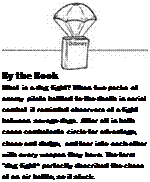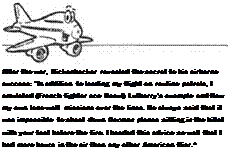Rickenbacker: From Chauffeur to Fighter Ace
Some American pilots, eager to put themselves to the ultimate test of airmanship, the dog fight, were growing weary of America s reluctance to enter World War I. The most famous of the impatient group was a champion auto racer named Edward V. “Eddie”
Rickenbacker. He and other mercenary flyers helped the French battle the German aces who were cutting a bloody swath through Allied skies. Their deadliest enemies were a sharpshooting band of German pilots called the “Flying Circus.” We ll get back to them shortly.
|
“Eddie” Rickenbacker, loved by millions as “Captain Eddie,” emerged from World War I as America s greatest hero, and went on to become a corporate leader. |
Rickenbacker—born Richenbacher, he Americanized it in response to anti-German wartime propaganda—arrived in Europe in 1918. His expertise with auto engines won him a job as General John “Black Jack” Pershing s personal chauffeur. In a moment of historic happenstance, Rickenbacker s mechanical skills were also the key to getting him into the cockpit of a fighter plane, launching him on a career that made him one of the greatest of American heroes.
One day in 1917, Rickenbacker stopped to help the driver of a Mercedes that had stalled on the side of a French road. The driver was legendary military firebrand Col. Billy Mitchell, an officer in the infant Air Service. In thanks for the roadside help, Mitchell agreed to transfer Rickenbacker to a flying squadron where he could learn to fly.
 |
Rickenbacker Throws His “Hat in the Ring’
When the United States entered World War I in 1917, Rickenbacker and a small group of daredevils joined the “Hat in the Ring”squadron. The name reflected the cavalier attitude many pilots took toward their deadly adventures. As if barnstorming—or in Rickenbacker’s case, auto racing—wasn’t dangerous enough for these flyers, they were about to go nose to nose with pilots who had years of combat flying experience and who had mastered the art of airborne sharpshooting.
Rickenbacker didn’t take to the sky naturally. In his early months as pilot, he battled severe airsickness, and when it came to shooting down enemy planes, he was not an overnight success. But he had a competitive spirit and he worked harder than other pilots. He was one of the few pilots who liked to fly solo missions along the front lines, something that most flyers regarded as akin to a death wish. His independent habits served Rickenbacker well and contributed to his kill total of 26 enemy planes by war’s end.
 f
f
Plane Talk












